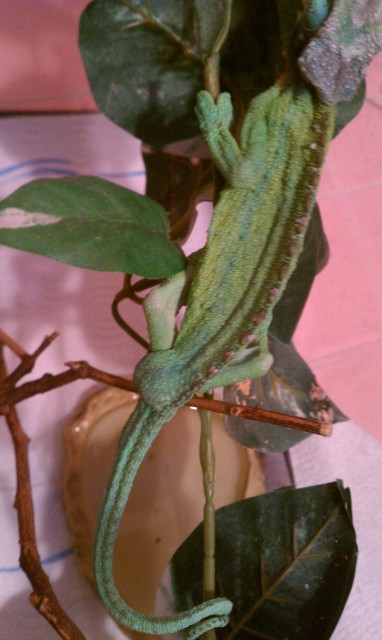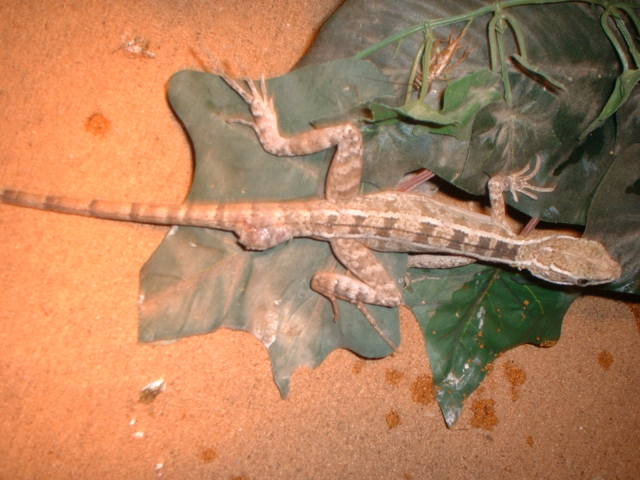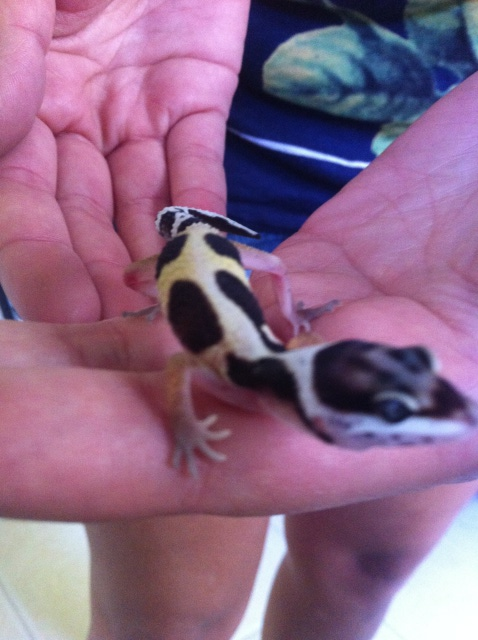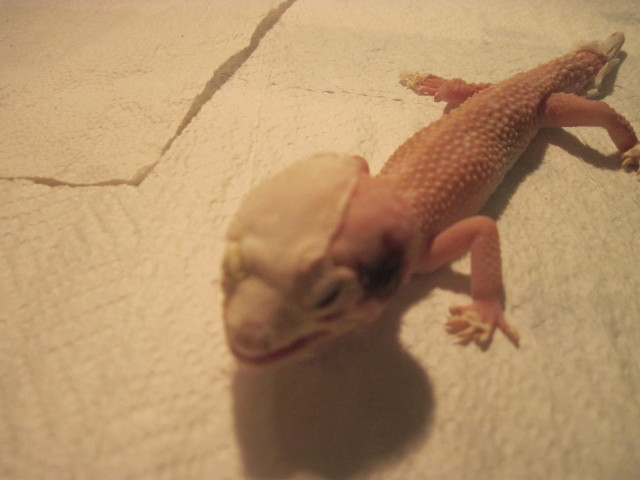QuestionHello, I reccently noticed a small lump on the left side of my long tailed grass lizard's face. it is in front of the ear and slightly above its lip(jaw area). I dont know much about the terms used in care for a long tailed lizard. The place where we purchased her was pretty brief on care instructions. I have her in a 5 gal aquarium filled with rain forest wood, and an antler for her to climb on as well as a porcelian skull which she uses as a cave. Her diet consists of meal worm and crickets purchased from petsmart. water is changed daily. Humidity is usually 85% . She was captive bred. This is all i know about her. Can you please help me figure out what to do. the lump is soft. I also noticed a small pink like area below the lump by the side of her lip. She is my first pet lizard and i care alot about this lil girl. She is not yet a year old.
AnswerHi, Kelly,
What are the temperatures? Are you supplementing her insects with a good calcium supplement? A vitamin powder containing preformed vitamin A once a week? Does she have a UVB light?
Long-tailed grass lizards are diurnal (awake during the day), and thus have difficulty absorbing enough vitamin D from supplements alone. As a result, they must have a UVB light, which allows them to synthesize vitamin D in their skin. (In the wild, sunlight would provide optimal UVB for them).
There are a few problems that might cause what you are describing. I'll just list two of the most common. One is a vitamin A deficiency, which can result in an ear abscess. The other is an injury which may cause an abscess as well. Either way, she will need to see a veterinarian for a proper diagnosis, and treatment. I recommend seeking out an experienced reptile vet, as someone who does not have sufficient reptile experience may not know how to properly treat an abscess in a reptile. The substance inside of an abscess in a reptile will be firmer than what occurs in mammals, so will need to be surgically removed.
As long as you have her in there, take in a fresh (not dried out) fecal sample as well, to have a parasite screening done. This is a good precaution, even though she is captive-bred.
Long-tailed grass lizards may live for over 5 years. Unless the place you purchased the animal from is very reputable (and from their description of not providing adequate care information, I rather doubt it), it is highly unlikely that she is actually captive-bred. This species is rarely bred in captivity, because their price tag is too low to attract commercial breeders. They are very easy to breed in captivity, but the cost of doing so would exceed the income from the hatchlings. The chance of encountering CBB long-tailed grass lizards in a pet store is pretty slim.
This is another good reason to have the parasite check done.

 Possible blockage in Bearded Dragon
QuestionBearded Dragon (Pogona
QUESTION: Do you
Possible blockage in Bearded Dragon
QuestionBearded Dragon (Pogona
QUESTION: Do you
 My chameleon
Question
my chameloen
He is very skinny and has develop
My chameleon
Question
my chameloen
He is very skinny and has develop
 Bump on basalisk tial
Question
lizard
There is a bump or abscess on the tail
Bump on basalisk tial
Question
lizard
There is a bump or abscess on the tail
 hatchling leopard gecko
Question
Salem
Hello Donna,
I am contacting you
hatchling leopard gecko
Question
Salem
Hello Donna,
I am contacting you
 My albino gecko :/
QuestionQUESTION: A few months ago I got two geckos fro
My albino gecko :/
QuestionQUESTION: A few months ago I got two geckos fro